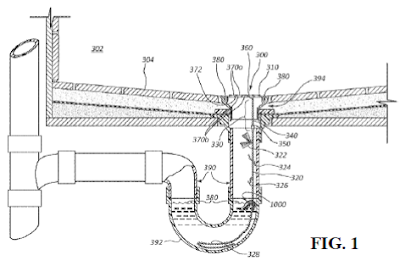An Industrious Solution To An Industrial Problem
The term “heavy industry” conjures images such as construction equipment and materials for building various structures such as bridges, hotels, skyscrapers, etc. Thus, of course one aspect of intellectual property related to heavy industry encompasses the development of, and improvements upon, various types of equipment related to the construction of such structures. However, another aspect to the heavy industry market includes upkeep of such structures, once they are constructed. Toward that end, there is currently an upswing in activity in terms of obtaining patent protection for “smart” buildings, homes, bridges, etc., which may rely on network-connected sensors capable of providing real-time data pertaining to various aspects of maintenance of large structures. However, such solutions are inherently complex, have issues related to divided infringement, and the IP space for such solutions is growing increasingly crowded.
In this age of technological advancement, it is thus still worthwhile to think about problems from another, perhaps simpler, perspective. To illustrate the point, consider a recently allowed patent (US 8910322 B2) for a product called the DrainWig (FIG. 1).
The DrainWig, simply put, is a non-complicated device that is inserted into a drain, which serves to prevent clogs. More specifically, a flexible chain 320 is coupled to a cap 310, which rests on a drain cover 372. In some examples, the chain may include additional interactive members (322, 324, 326). The chain is placed in the drain, where, during use, hair gathers on the chain and/or interactive members. To clean the drain, the chain is simply pulled out and the chain may then be cleaned and reused, or discarded.
The DrainWig was invented by a couple with five girls with long hair, thus bringing to mind the phrase “necessity is the mother of invention”. However, the implications of such an invention are wider than just preventing arguments over who cleans the drain in particular households. Consider for example, the hotel industry, where such an invention may save countless amounts of money in terms of upkeep, and may avoid the well-known drawbacks of chemical de-clogging systems. Thus, even in this current age of technological advancement, the DrainWig serves to remind inventors that sometimes a simple solution can prove very effective.
In this age of technological advancement, it is thus still worthwhile to think about problems from another, perhaps simpler, perspective. To illustrate the point, consider a recently allowed patent (US 8910322 B2) for a product called the DrainWig (FIG. 1).
The DrainWig, simply put, is a non-complicated device that is inserted into a drain, which serves to prevent clogs. More specifically, a flexible chain 320 is coupled to a cap 310, which rests on a drain cover 372. In some examples, the chain may include additional interactive members (322, 324, 326). The chain is placed in the drain, where, during use, hair gathers on the chain and/or interactive members. To clean the drain, the chain is simply pulled out and the chain may then be cleaned and reused, or discarded.
The DrainWig was invented by a couple with five girls with long hair, thus bringing to mind the phrase “necessity is the mother of invention”. However, the implications of such an invention are wider than just preventing arguments over who cleans the drain in particular households. Consider for example, the hotel industry, where such an invention may save countless amounts of money in terms of upkeep, and may avoid the well-known drawbacks of chemical de-clogging systems. Thus, even in this current age of technological advancement, the DrainWig serves to remind inventors that sometimes a simple solution can prove very effective.




